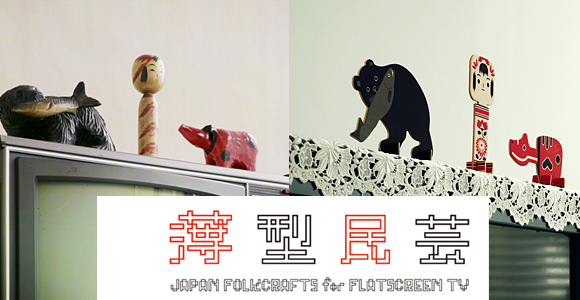 After the recent switch from analog to digital terrestrial broadcasting in Japan, more and more people are making the switch to flat screen units. And as the streets find themselves more and more littered with discarded boxy cathode ray tube model TV’s, Japan may have accidentally thrown something else in the trash – a piece of their culture and heritage.
After the recent switch from analog to digital terrestrial broadcasting in Japan, more and more people are making the switch to flat screen units. And as the streets find themselves more and more littered with discarded boxy cathode ray tube model TV’s, Japan may have accidentally thrown something else in the trash – a piece of their culture and heritage.
For those of us old enough to remember having a huge CRT style television it was certainly the household’s prime location for your best knickknacks. It had the most eye traffic after all.
However, with many TV tops nowadays measuring an inch in thickness that custom has become endangered. So, Japan Folkcrafts for Flatscreen TV was created. Applying the axiom “if you can’t beat ‘em join ‘em,” some of Japan’s favorite trinkets have become flattened to fit on current TV models.
You might be wondering why this concerted effort to save things put on the TV exists. Some of the most typical bric-a-brac actually have their own unique and deep connection to the history of Japan.
■ Wood Carving of a Bear (Kibori No Kuma)

It all started around 1921 when member of Parliament and descendant of the powerful Tokugawa Clan, Yoshichika Tokugawa took a trip to Switzerland. While there he took a fancy to a wooden carving of a bear and bought it as a souvenir.
After returning to Japan he noticed that the farmers in Hokkaido were struggling to make money during the harsh winter months. So he recommended that they take up carving wooden bears like his to make some extra cash in the off season – and they did.
Nearly a hundred years and millions of bears later the Hokkaido wooden bears can be found all over Japan.
■ Red Cow (Aka Beko)

■ Kokeshi

The reason for both these items’ popularity was a superstition that red colored toys would protect children from smallpox, which was running rampant at the time in Japan.
There are theories that kokeshi were actually originally designed to be either tools for abortion or memorials of them. These theories however are based on little more than the fact that the word “kokeshi” in Japanese can be interpreted to mean “child removal.”
■ Panda
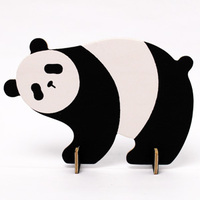
From that point on panda-monium struck Japan, whose people value cuteness more than anyone. Panda merchandise was flying off the shelves left and right and the phrase “Panda Barker” (Kyaku Yose Panda) was coined in Japanese. “Barker” is in the sense of a carnival barker, a panda barker is something so special that it brings in people/customers by the droves.
Perhaps Japan’s continuing love of pandas can help take them back to a more optimistic time with China.
These four knickknacks had a lot to teach about the history of Japan, and it looks like the makers of Folkcrafts for Flatscreen TV have more in the pipeline.
So if you’re lucky enough to stumble upon a CRT model television take look through those dusty ornaments on top. You might learn something.
Source: Japan Folkcrafts for Flatscreen TV via KiYOTO (Japanese)
▼Unfortunately, these cows’ heads don’t bobble.
▼They seem to be able to stand on the thinnest of things.

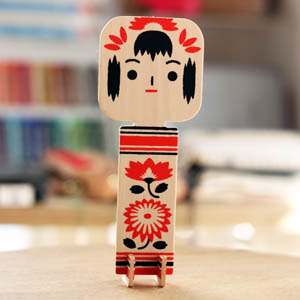
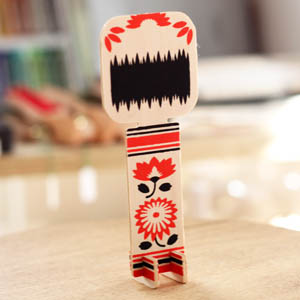
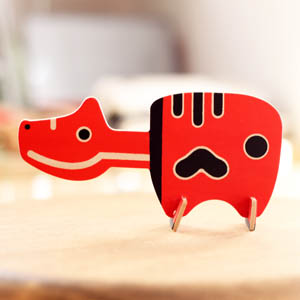
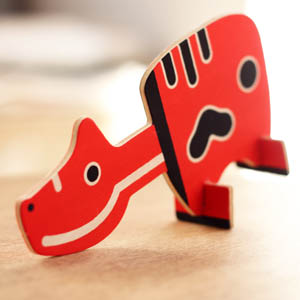
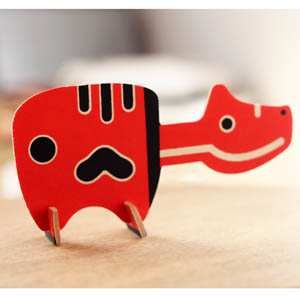
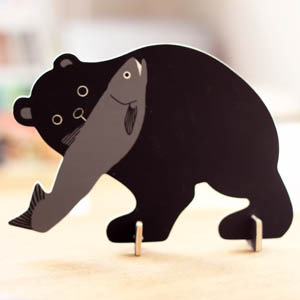
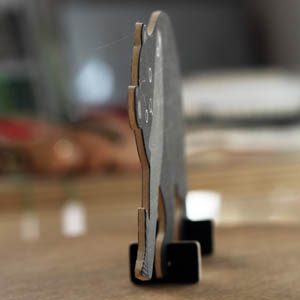
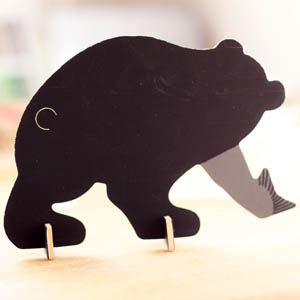
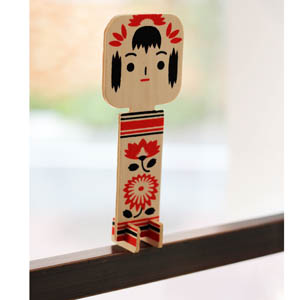
 ‘Cows can marry’ and other fascinating bovine facts from India
‘Cows can marry’ and other fascinating bovine facts from India Flush your prayers down the toilet at this unique Japanese temple
Flush your prayers down the toilet at this unique Japanese temple Unusual guardians appear at Kyoto’s Kiyomizudera temple
Unusual guardians appear at Kyoto’s Kiyomizudera temple Beautiful video of master Japanese doll craftsman is equal parts inspiring and relaxing
Beautiful video of master Japanese doll craftsman is equal parts inspiring and relaxing 【Exploring Unfamilar Japan】We have dessert and meet a cow named Julia at an organic island café
【Exploring Unfamilar Japan】We have dessert and meet a cow named Julia at an organic island café Red light district sushi restaurant in Tokyo shows us just how wrong we were about it
Red light district sushi restaurant in Tokyo shows us just how wrong we were about it Japanese ramen restaurants under pressure from new yen banknotes
Japanese ramen restaurants under pressure from new yen banknotes Pokémon Sleep camping suite and guestrooms coming to Tokyo Hyatt along with giant Snorlax burgers
Pokémon Sleep camping suite and guestrooms coming to Tokyo Hyatt along with giant Snorlax burgers Beautiful Red and Blue Star luxury trains set to be Japan’s new Hokkaido travel stars
Beautiful Red and Blue Star luxury trains set to be Japan’s new Hokkaido travel stars McDonald’s new Happy Meals offer up cute and practical Sanrio lifestyle goods
McDonald’s new Happy Meals offer up cute and practical Sanrio lifestyle goods Tokyo Tsukiji fish market site to be redeveloped with 50,000-seat stadium, hotel, shopping center
Tokyo Tsukiji fish market site to be redeveloped with 50,000-seat stadium, hotel, shopping center French Fries Bread in Tokyo’s Shibuya becomes a hit on social media
French Fries Bread in Tokyo’s Shibuya becomes a hit on social media Beautiful Ghibli sealing wax kits let you create accessories and elegant letter decorations【Pics】
Beautiful Ghibli sealing wax kits let you create accessories and elegant letter decorations【Pics】 Sakura tree falls on man at Sannenzaka near Kiyomizu temple in Kyoto 【Breaking News】
Sakura tree falls on man at Sannenzaka near Kiyomizu temple in Kyoto 【Breaking News】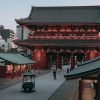 Rumors say Tokyo’s Sensoji Temple sticks you with bad fortunes, so we bought 100 to find out
Rumors say Tokyo’s Sensoji Temple sticks you with bad fortunes, so we bought 100 to find out All-you-can-drink Starbucks and amazing views part of Tokyo’s new 170 meter-high sky lounge
All-you-can-drink Starbucks and amazing views part of Tokyo’s new 170 meter-high sky lounge More foreign tourists than ever before in history visited Japan last month
More foreign tourists than ever before in history visited Japan last month Studio Ghibli releases new action figures featuring Nausicaä of the Valley of the Wind characters
Studio Ghibli releases new action figures featuring Nausicaä of the Valley of the Wind characters New private rooms on Tokaido Shinkansen change the way we travel from Tokyo to Kyoto
New private rooms on Tokaido Shinkansen change the way we travel from Tokyo to Kyoto Starbucks reopens at Shibuya Scramble Crossing with new look and design concept
Starbucks reopens at Shibuya Scramble Crossing with new look and design concept Studio Ghibli glasses cases let anime characters keep an eye on your spectacles
Studio Ghibli glasses cases let anime characters keep an eye on your spectacles Studio Ghibli releases Kiki’s Delivery Service chocolate cake pouches in Japan
Studio Ghibli releases Kiki’s Delivery Service chocolate cake pouches in Japan New definition of “Japanese whiskey” goes into effect to prevent fakes from fooling overseas buyers
New definition of “Japanese whiskey” goes into effect to prevent fakes from fooling overseas buyers Our Japanese reporter visits Costco in the U.S., finds super American and very Japanese things
Our Japanese reporter visits Costco in the U.S., finds super American and very Japanese things Studio Ghibli unveils Mother’s Day gift set that captures the love in My Neighbour Totoro
Studio Ghibli unveils Mother’s Day gift set that captures the love in My Neighbour Totoro New Japanese KitKat flavour stars Sanrio characters, including Hello Kitty
New Japanese KitKat flavour stars Sanrio characters, including Hello Kitty New Pokémon cakes let you eat your way through Pikachu and all the Eevee evolutions
New Pokémon cakes let you eat your way through Pikachu and all the Eevee evolutions Disney princesses get official manga makeovers for Manga Princess Cafe opening in Tokyo
Disney princesses get official manga makeovers for Manga Princess Cafe opening in Tokyo Sales of Japan’s most convenient train ticket/shopping payment cards suspended indefinitely
Sales of Japan’s most convenient train ticket/shopping payment cards suspended indefinitely Sold-out Studio Ghibli desktop humidifiers are back so Totoro can help you through the dry season
Sold-out Studio Ghibli desktop humidifiers are back so Totoro can help you through the dry season Japanese government to make first change to romanization spelling rules since the 1950s
Japanese government to make first change to romanization spelling rules since the 1950s Ghibli founders Toshio Suzuki and Hayao Miyazaki contribute to Japanese whisky Totoro label design
Ghibli founders Toshio Suzuki and Hayao Miyazaki contribute to Japanese whisky Totoro label design Doraemon found buried at sea as scene from 1993 anime becomes real life【Photos】
Doraemon found buried at sea as scene from 1993 anime becomes real life【Photos】 Tokyo’s most famous Starbucks is closed
Tokyo’s most famous Starbucks is closed One Piece characters’ nationalities revealed, but fans have mixed opinions
One Piece characters’ nationalities revealed, but fans have mixed opinions We asked a Uniqlo employee what four things we should buy and their suggestions didn’t disappoint
We asked a Uniqlo employee what four things we should buy and their suggestions didn’t disappoint Princesses, fruits, and blacksmiths: Study reveals the 30 most unusual family names in Japan
Princesses, fruits, and blacksmiths: Study reveals the 30 most unusual family names in Japan Japan’s Ninja Bear shot and killed in Hokkaido, eaten as yakiniku in Tokyo, to become stew next
Japan’s Ninja Bear shot and killed in Hokkaido, eaten as yakiniku in Tokyo, to become stew next New capsule toy collection features military commander samurai armour from the Sengoku Period
New capsule toy collection features military commander samurai armour from the Sengoku Period Year of the Dragon Pooh! Disney Japan’s plushies gets early Chinese zodiac changeover【Pics】
Year of the Dragon Pooh! Disney Japan’s plushies gets early Chinese zodiac changeover【Pics】 Panda sightings in Tokyo cause frenzy on social media
Panda sightings in Tokyo cause frenzy on social media We eat a luxurious Japanese-style buffet breakfast in a restaurant full of wood-carved bears
We eat a luxurious Japanese-style buffet breakfast in a restaurant full of wood-carved bears Preorders now open for Samurai Teddy Bears made by classic German toy maker Steiff
Preorders now open for Samurai Teddy Bears made by classic German toy maker Steiff Video of guy giving pandas medicine is insanely cute, unless you’re the guy
Video of guy giving pandas medicine is insanely cute, unless you’re the guy Interactive online map of Kyoto lets you toggle between modern day and the 9th century
Interactive online map of Kyoto lets you toggle between modern day and the 9th century Mark your territory with these mega cute Japanese name stamps, starring 15 playful dog breeds
Mark your territory with these mega cute Japanese name stamps, starring 15 playful dog breeds A calendar filled with pictures of furry panda butts is here to improve your gloomy Mondays
A calendar filled with pictures of furry panda butts is here to improve your gloomy Mondays Say goodbye to carved pumpkins because fruit faces will scare your socks off this Halloween
Say goodbye to carved pumpkins because fruit faces will scare your socks off this Halloween 16 fancy eggs from Japanese bento lunch boxes
16 fancy eggs from Japanese bento lunch boxes Ueno Park’s panda bread is just as warm, fluffy and cute as the pandas themselves 【Photos】
Ueno Park’s panda bread is just as warm, fluffy and cute as the pandas themselves 【Photos】 We get ready for camping season with Amazon Japan’s lowest-rated wooden mug
We get ready for camping season with Amazon Japan’s lowest-rated wooden mug We tried “brain-flavored” zombie ramen from Hokkaido, with surprising results!
We tried “brain-flavored” zombie ramen from Hokkaido, with surprising results! Town in Japan now protecting itself from bears with Monster Wolf robot【Video】
Town in Japan now protecting itself from bears with Monster Wolf robot【Video】
Leave a Reply